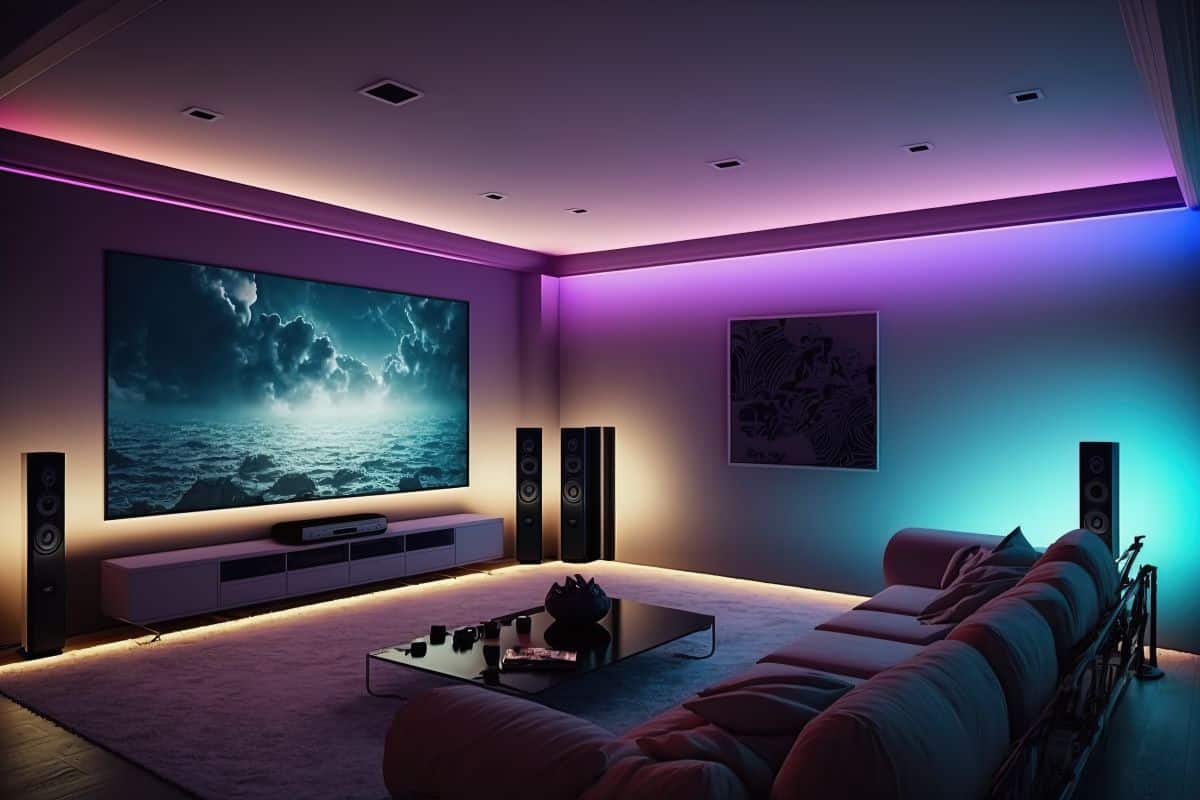the essentials in brief
HDR10+ is a must for the best viewing experience. Everything else here...
Various manufacturers and content providers use HDR10+. Read more here...
Dynamic metadata technology is the main difference between HDR10 and HDR10+. You can read more about it here...
What exactly is HDR10+? HDR10+ is an advanced HDR technology that takes the visual experience to a whole new level. This post explains HDR10+ and the differences to other HDR formats in more detail.
Contents
HDR10+ at a glance

What is HDR10+ exactly?
HDR10+ is an advanced HDR format developed to an impressive visual experience with vivid colors and a detailed presentation.
HDR stands for High Dynamic Range (high dynamic range) and refers to the extended range of contrast and colors that modern televisions and other devices can display.
HDR10+ goes one step further than the conventional HDR10 standard. While HDR10 uses static metadata that applies to the entire video, HDR10+ can use dynamic metadata.
This dynamic metadata allow more accurate scene-by-scene or even frame-by-frame adjustment the brightness and color information.
Benefits of HDR10+
HDR10 + offers a whole range of advantages that take the visual experience to a whole new level. However, the question arises whether the use of HDR10+ is really a must. Let's take a look at the main arguments:
With HDR10+ the colors become more vivid, the contrasts more impressive and the details are displayed even more clearly. You literally immerse yourself in the world of your favorite films and series and experience a visual spectacle that conventional HDR formats cannot offer.
The use of dynamic metadata enables adjust the brightness and color values scene-related and with high precision. The result is the full potential of the HDR effect and an impressive display of detail.
Note: Not all content is automatically available in HDR10+. Whether they will be released in HDR10+ depends on the particular film or series production.
HDR10+ has the support of a wide range of manufacturers and content providers. That's it on numerous devices such as televisions, Blu-rayplayers and streaming services available. So you have the peace of mind that you can enjoy HDR10+ content on your preferred device.
HDR10+ is about an innovative technology, which is constantly being developed. HDR10+ is well prepared for future requirements thanks to its flexibility and improved display options. By using HDR10+ you are investing in the future of vision.

A broad support
Various manufacturers and content providers have impressively supported HDR10+ in a short time. Here are some of the key players adopting HDR10+:
Samsung is one of the leading manufacturers of televisions and mobile devices. Samsung used HDR10+ early on. Many Samsung devices, especially the high-quality QLED TVs, support HDR10+. In this way, they offer their customers the best possible viewing experience.
Auch Panasonic is a HDR10+ support company. The company has launched a wide range of TVs and Blu-ray players compatible with HDR10+. They enable an impressive viewing experience with high-quality displays and precise color reproduction.
Interesting fact
HDR10+ has the support of more than 100 companies worldwide, including leading manufacturers such as Samsung, Panasonic and Philips. In addition, a growing amount of HDR10+ content is offered by content providers such as 20th Century Fox and Warner Bros.
In addition to the manufacturers, well-known content providers have also jumped on the HDR10+ train such as 20th Century Fox, Warner Bros. and Amazon Prime Video.
they offer a growing selection of HDR10+ content such as films, series and documentaries that captivate with their impressive image effects and bright colors.
In addition to Samsung and Panasonic, there are a number of other companies that have integrated HDR10+ into their devices. underneath Hisense, Philips, TCL, Vizio and many others.
The combined efforts of manufacturers and content providers are helping HDR10+ becomes a widely used HDR format, which can be used by a growing number of users worldwide.
Thanks to the wide support, HDR10+ content be used on a variety of devices. The result is an immersive viewing experience with vibrant colors and stunning contrasts.
HDR10+ vs HDR10
HDR10 and HDR10+ are both HDR formats. Both aim to the contrast range and the color space to expand. However, there is an important difference between the two formats that affects the visual experience.
The main difference is in the metadata, which contain information about how the content is rendered. HDR10 uses static metadata that applies to the entire video. HDR10+ uses dynamic metadata.
Tip: If you want to enjoy an impressive viewing experience with vivid colors and detailed display, you should look out for devices with HDR10+ support.
HDR10 uses static metadata that is set when a video begins and persists for its entire duration. The consequence is that an adjustment of the brightness and color values to the individual requirements of each scene is not possible.
This can result in that certain scenes appear over- or underexposed and the full potential of HDR technology is not being realised.
HDR10+, on the other hand, allows dynamic metadata. This metadata is adjusted scene-by-scene or even frame-by-frame. This makes it possible to optimize the brightness and color information in real time for a more precise and detailed display of the content.
These dynamic adjustments are the basis for realizing the full potential of HDR technology and creating an immersive viewing experience.
With HDR10+, dark areas are displayed with more detail, while maintaining the brightness of the bright areas. The result is an increased contrast ratio, resulting in stunning detail and vivid image reproduction.
Precise scene-by-scene adjustment ensures that every nuance and detail is presented as the director intended.

The perfect viewing experience
HDR10+, while not a must, is a worthwhile investment for anyone looking to get the best possible viewing experience. With improved picture quality, dynamic range adjustment and broad support, HDR10+ is a technology with the potential to revolutionize the viewing experience.
If you want to enjoy an impressive viewing experience with vivid colors, deep contrasts and richly detailed representation, you should consider HDR10+. For the ultimate viewing experience, when purchasing your devices, make sure they support HDR10+ and check the availability of HDR10+ content.


![Samsung QLED 4K Q60B 50 Inch TV (GQ50Q60BAUXZG, German Model), Quantum HDR, Quantum Processor Lite 4K, Multi View, Smart TV [2022]](https://m.media-amazon.com/images/I/51xqt+dRJpL.jpg)